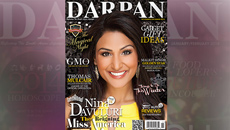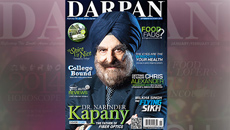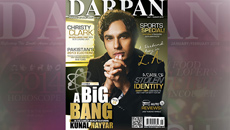In 1961, Yuri Gagarin, a cosmonaut from Russia recorded a milestone in the history of mankind after entering space. He was the first to not only enter space but also to orbit the Earth. The operation was followed by numerous other expeditions that were deeper strides into an even deeper pool of our boundless and mysterious universe. Another popular astronaut or perhaps the most famous amongst his peers, Neil Armstrong who recently passed away, was the first to step foot on the moon. His sayings – “The Eagle has landed” and “That’s one small step for [a] man, one giant leap for mankind” – have proved to be a juncture for capabilities that a human mind holds. Sharing her name amongst this rank of notable and accomplished astronauts is American-born Sunita Williams. The 48-year-old who has been part of seven spacewalks, two long duration expeditions and several scientific experiments has spent a total of 322 days in space on two missions and is a role model for those who aspire to discover the unknown horizons of space exploration.
Born as Sunita Lyn Pandya to an Indian father Deepak Pandya from Gujarat and a Slovenian mother Bonnie Pandya, Williams is the youngest of the three siblings. “My parents are both Americans. My father is Indian and came over to United States in his mid-twenties, my mother is of Slovenian descent and was born in the United States,” says Williams. Growing up in a household where her father was a neuroscientist and mother an X-ray technician, Williams takes pride in her multicultural identity. “I have got a pretty mixed ethnic background and grew up in a very interesting household,” says Williams and reflects on how she observes both worlds. “I appreciate the fact that I grew up in such a diverse household – I love every part of that. I love the spirituality of India, and the spicy food and everybody should maintain those parts of their upbringing and appreciate it and have a lot of tolerance for each other.” Her strong values are reflected in her persona that exhibits humbleness and modesty with a passion for what she does best.
Growing up, Williams aspired to be a veterinarian and certainly never imagined carving out a career as an astronaut. “I have always wanted to be a veterinarian because I love animals.” But what made her cross paths with the mystifying world beyond earth? Her brother Jay Thomas attended the United States Naval Academy, an undergraduate college for the nation’s naval service located in Annapolis, Maryland. Williams looked up to her brother Jay throughout her childhood years, and he can be rightly credited for influencing her to attend this acclaimed institution. According to Williams, Jay is a “very active individual, he is a lot of fun, likes to be very adventurous. When I was growing up, he was sort of a role model for my sister and me just because he was pretty daring.” Williams along with her sister, Dina Anna, visited the Naval Academy while Jay was there in attendance, and though it seemed “fun” to the sisters, Williams was not swayed away instantly. While she was exploring her options at other colleges, Jay’s words prompted her interests to pursue her education at the academy and attain a Bachelor’s in Physical Science. “To be honest with you it didn’t really seem like a place that I was really interested in particularly as a girl at first, but I was looking at colleges and he said ‘You really should consider this, I think this would be up your alley, this is a place where you would like to do a lot of outdoor things, this is something that maybe you would like.’ He was a role model for me. Very smart and very athletic and I took his recommendation seriously.”
However, her interests in becoming an astronaut was still nowhere in the picture. After graduating, Williams pursued her interest of becoming a pilot. But even that tale has a twist. Originally she intended to become a jet pilot, why so, you should ask? “I had seen Top Gun and I was like ‘yeah yeah.’ I didn’t have an extreme love or anything. As a young kid I just thought it was cool.” But at that time, the particular profession was not as welcoming to women as it is perhaps today and not many women flying in combat translated into fewer opportunities for women as jet pilots. “I think there was one in a year when I was there and of course I didn’t get in.” Instead she got helicopters. “I was a little disappointed just because it wasn’t as cool.”
Nevertheless that did not discourage her to deliver her duties with enthusiasm and passion. “Your life feels like it’s always full of a little disappointments, which are just really different doors that are being opened,” reflects Williams. She not only excelled in the line of work, but also rejoiced in going an extra mile to learn the intricate techniques. “I loved flying helicopters. It’s really fun when you can hover right over the ground and you can fly it over tree tops and you can land on ships, vertically and you can hover. It definitely became and is the love of my life.” Although becoming a helicopter pilot was more than satisfying for Williams, and even though she had never imagined that she would one day lead a space expedition as a commander, it was not the profession that destiny had in store for her. Space expeditions, scientific experiments and spacecrafts were very much the future path for this genuinely cordial individual.
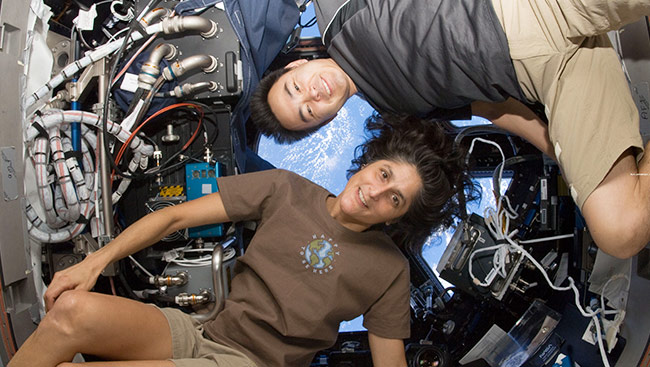
Williams talks about how she landed in NASA as an astronaut after a successful career as a helicopter pilot. “I really like flying helicopters and I was very interested in how they worked.” While performing her duties, the “maintenance people” who fix helicopters allowed her to get in and assist them a little. This exercise intrigued her interests in learning about the elaborateness of helicopters. “So I got really interested in ‘Oh how does this thing work?’ and that sort of peaked my interest in learning a little bit more about aviation.”
She applied to pilot school for the mere desire of learning more about how airplanes worked, oblivious to the fact that test pilot school is traditionally the pass to become an astronaut. “I did not know that, but historically the first astronauts were test pilots and that is how I got an exposure to the whole idea.”
Henceforth, this very polite female fueled her journey to bridge new heights with her knowledge and was now definitely at that precise spot in her career from where she would be making differences in science, while inspiring myriad of individuals to engage and contribute to the field.
As part of the test pilot curriculum, Williams along with other individuals visited the Johnson Space Centre in Houston, where she met astronauts for the first time in her life. Recalling a conversation with John Watts Young, a retired astronaut, naval officer, test pilot and aeronautical engineer, who records his name in history as the ninth person to walk on the moon, Williams says Young “talked about landing on the moon, talked about flying helicopter-type vehicles to practice landing on the moon and I said ‘Wow I actually know how to do that.’ I’m like I have some of those skills already.”

Williams was selected by NASA – National Aeronautics and Space Administration – in June 1998 and joined NASA’s training program in August 1998. As part of the quintessential Astronaut Candidate Training, which is basically designed to develop the required knowledge and skills for formal mission training after securing selection for a flight, Williams was exposed to various scientific and technical briefings, intensive instruction in shuttle and International Space Station systems.
Nevertheless, we cannot condone the profound training involved in preparing astronauts for the real deal up in space. Training is extensive, robust and brisk with the focus on all aspects of survival. “Basic training is a lot of fun because you start with your group of people,” Williams says adding, “You have got to learn orbit of mechanics and how the systems work and things like that.” Elaborating further, Williams explains with excitement that some of the really great things you get to do are some of the “team building exercises, extreme living exercises.”
“We do the National Outdoor Leadership School, which teaches us of course to be leaders as well as powers,” says Williams. NOLS is an institute that imparts technical outdoor skills, leadership and environmental ethics with branches in eight nations. “We take turns solving problems, I’m not talking math problem, I’m talking about how you would traverse a place like a ravine, we were down in the canyon lands or on skis with a sled behind doing cross country, wilderness cross country skiing, building an igloo to sleep in at night type of things.” Groups of 6 to 8 individuals are organized for training. Although instructors provide prior knowledge of some of the basic skills, the crucial part is sustaining on matters such as how to live together, taking care of yourself and your belongings and also adhering oneself to leadership, followership and teambuilding for a common goal. Another training technique that Williams talks about is NEEMO – NASA Extreme Environment Mission Operations, a NASA program that examines human survival in the Aquarius habitat underwater. The program aims to acclimatize astronauts for future space explorations.
What makes NEEMO so extreme is the fact that you don’t have the option to be back on earth because you are saturation diving, therefore you have to be underwater. “You have to stay under water until it is time to do the de-saturation. So it teaches you to live in an extreme environment with the same people and doing tasks and being comfortable with that.” In other words, the exercises are stimulators that teach tactics for living away from home in a small compartment just like space for an extended period of time.
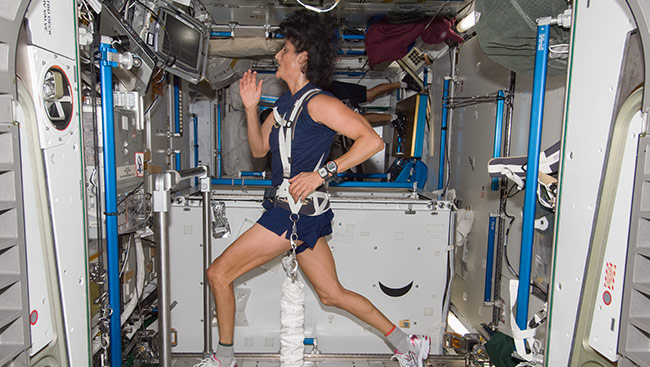
Her protracted tenure at NASA rendered her to be part of two paramount expeditions, where she recorded a total of 322 days in space on two missions. She also holds the world record with 50 hours and 40 minutes for total cumulative spacewalk time by a female astronaut. But there is more to appreciate and laud about this illustrious astronaut and even more, this inspirational personality! Williams was appreciated for the dynamism with which she carried on athletic and noble tasks, such as participating in the Boston Marathon from space and donating her hair to Locks of Love.
Expedition 14/15 was carried on from December 2006 to June 2007, where Williams served as Flight Engineer. “I ran the Boston Marathon alongside my sister, who did it on the ground. I think physical fitness is very important, and it should be part of everybody’s life, for your peace of living. One should have an active lifestyle.”
This US astronaut became the first person to participate in a marathon from space after completing the metaphorical finish line for the Boston Marathon on the International Space Station (ISS). Shortly after completing the marathon, Williams radioed to NASA’s Johnson Space Center, “I’m done! Woo hoo!” She ran 42.2 kilometres on a treadmill with sore hips and shoulders from the harness that actually kept her from floating off the contraption.
Physical fitness is something that was assimilated in her daily routine, and as Williams explains, she understood the value of physical fitness and a healthy lifestyle from a young age. She grew up watching her father going for a swim and a jog every morning, and her mother, who was also keen on following an active lifestyle, was a tennis player and skier. “We grew up luckily enough in a family that was very enthusiastic about physical fitness. My brother, my sister and I were swimmers. My thought was ‘You know what I just want to emphasize how important this is for all of us and even astronaut’s up in space have to work out every day and it is part of your lifestyle and it is just part of your mental well being as well as your physical well being.’”
As if running a marathon wasn’t enough, an ardent Williams went forward and lent her participation in a Triathlon from space in her 2012 expedition. This expedition was also a moment of pride for her and moment of motivation for others after she was appointed a commander of the International Space Station, becoming the second woman ever to command the ISS after Peggy Whitson from the US. The idea however, was brought forth by Dr. Sanjay Gupta, the award-winning chief medical correspondent for CNN’s health, medical and wellness programs. Gupta visited the Johnson Space Center while he was working on a story that showcased people going in space and also what happens to them when they are there. “I gave him a tour and showed him around our laboratories. We do physical rehabilitation after people come back and showed him some of the exercise equipment that’s on board, which includes a treadmill, a bicycle and a weight lifting machine and he was telling me about the triathlon,” says Williams. The two reciprocated their thoughts on the importance of physical fitness and how it is an imperative part of their lives. While Gupta was discussing about an upcoming triathlon with Williams, she expressed her interest to participate but because she was scheduled to be in space at the time of the triathlon, Gupta suggested ‘Why don’t you do it while you are in space’ and Williams replied saying, “Ok, we’ll try this.” “So my trainer helped me figure out a way to use the weight lifting exercise as stimulator for the swimming and then of course I did the cycling on the bike and then running on the treadmill. And so I did my little triathlon and I was pretty tired, it was tough,” she adds.
Her two extensive odysseys in space reflect this American-Indian astronaut’s spirituality disposition. In her 2007 expedition, Discovery, Williams took a copy of the Bhagavad Gita, the Hindu spiritual book; a statue of Hindu deity Ganesha; and a box full of samosas since she loves spicy food. In the following expedition, Williams carried a copy of The Upanishads, Hindu scriptures, with her in space, which she explains kept her grounded. “It was obvious more in space about how one world we are, but when you go and actually see all these people, you appreciate their differences but know that we are all really the same, we are just people on this little planet, we are lucky.”
The lists of her adventures in space do not end here. On her 2007 expedition, Williams donated her hair to a non-governmental organization called Locks of Love. The NGO provides hairpieces to individuals under the age of 21, who have been suffering with long-term medical hair loss from an illness in the US and Canada. Williams explains her endeavour saying she was influenced by her friend’s daughter who had actually donated her hair to Locks of Love. “I think she was like 10 or 12 at that time and we were doing a little triathlon and I saw her and I said ‘What happened to your hair?’ She said “Oh, I cut them for Locks of love.’ I was pretty impressed.” “I was thinking I don’t really want to have long hair in space because it gets stuck. So this little girl sort of inspired me and I said ‘You know what, I’m going to do it.’ I wanted people to recognize this. We probably all know somebody who has cancer and just want to help out somewhere.”
Williams is no less than a hero for children and adults in India, or rather South Asians around the globe. She is the second women of Indian descent to enter space after Kalpana Chawla, who passed in away 2003 along with seven other astronauts when the US space shuttle Columbia disintegrated before landing. Williams describes Chawla as a good friend, who shared common interests with her such as cycling, flying and nature. “I knew her husband, but I got to know her family back in India unfortunately after the accident but we remained great friends – they are wonderful people.” And how does NASA remember Chawla? “We have a remembrance celebration of all the people from the Columbia accident, Apollo 1 accident and the Challenger accident at the end of January because that’s when all three of those accidents happened together. Her picture is also prominently displayed…I have little things of her…little notes that she had written to me of inspiration that I maintain myself. She was a great person.”

The 48-year-old has travelled to India a number of times, and in her recent travels, she travelled across the country to promote space research. Williams describes the experience as “inspiring and humbling” and mentions her ecstasy over India boasting its own space program and that the country is providing individuals an avenue to have them interested in the art of building spacecrafts. In 2008, the Government of India honoured the achievements of this record-setting astronaut by bestowing her with the Padma Bhushan in Washington, DC. This prestigous award is the third-highest civilian award in the country, and was conferred to Williams for her accomplishment of completing the longest space flight as a woman.
She is married to Michael Williams, a federal police officer, and during our conversation, she talked about how supportive he has been over the years in her career endeavours. “He is my best friend. He knows me for who I am. He humbles me every now and then, and knows my capabilities and my weaknesses. He is always helping me overcome some of my weaknesses and he is just a good buddy. We look at each other primarily just as friends, we don’t look at each other’s accomplishments.”
The courteousness and sanguinity that Williams carries is infectious. A perfect combination of politeness, discerning knowledge and pragmatism sets her apart and that is certainly one of the many reasons why Williams inspires and exhilarates others to pursue their dreams with simplicity. “I hope I have a positive influence on people and I think that is the ultimate goal of your existence, your being on this planet is actually to help other people in a positive way.” To those who look up to her and others who aspire to be successful in their respective fields, Williams says, “Find what you like do to, because what you love to do, you’ll do well. And when you do something well that will open other doors for you. You will grow in to do more and more and try then to positively influence people.” Does she look forward to more expeditions in future? “I want to see some of the younger guys in our office fly. But if the opportunity is there, I would definitely go!”
Photo: NASA Johnson Space Center, India Gov, Sunita Williams









